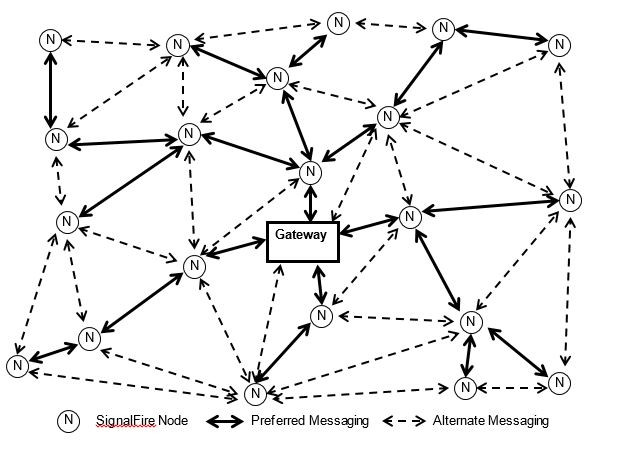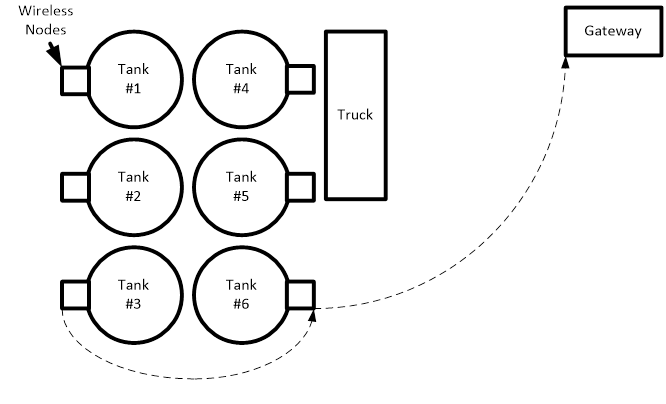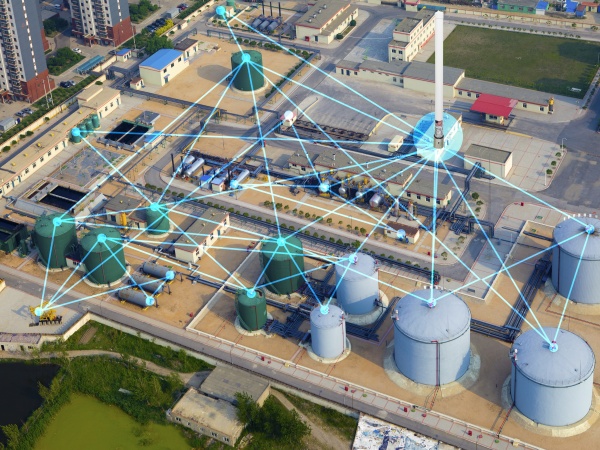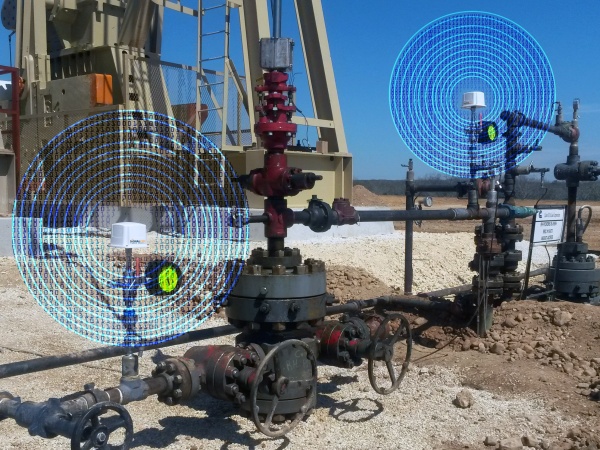Self-Configuring Mesh Network Automatically Adapts to Network Changes in Tank Level Monitoring Application

Quite a few sensor radio protocols exist for wireless systems in the SCADA market. A mesh network system is a less commonly known one.
A mesh network allows wireless nodes to utilize neighboring nodes to relay or “hop” messages to a central location (Gateway). Each node determines the “best path” to the Gateway based on information derived from nearby nodes. The intuitiveness of the nodes allows the system to automatically adjust to changes so data can take alternative paths when necessary to its ultimate destination.
The self-configuring capability of the mesh network proved essential in the following tank level monitoring application that required frequent network changes.
In the original configuration of a mesh network supporting the wireless remote monitoring and control of tank levels, eight short-range wireless nodes measured tank levels, checking into a Gateway about 1000 feet away. Hydrostatic pressure sensors, monitoring the tank level, as well as the wireless nodes, were installed at ground level. Four of the nodes were on the “wrong” side of the tank battery and had to transmit “through” the tanks to get data to the Gateway. This configuration worked fine until a tanker truck parked between the tanks and the Gateway. With the tanker in the way, one or two or the nodes on the far side of the tank battery could not directly reach the Gateway.

The problem was solved by solar powering one of the nodes on the near side of the tank battery, allowing it to automatically forward messages, if necessary. When the truck was not present, all nodes would check into the Gateway directly. When the truck came to offload oil and blocked some of the nodes on the backside of the tank battery, those nodes would automatically reroute their message path through the always-on node on the front. Once the truck drove away, those nodes reverted to direct communications with the Gateway.
Without the mesh networking capability, the wireless remote monitoring and control system would not work under varying circumstances. No configuration or setup is needed with a true mesh system as it operates automatically, freeing the installer of complicated RF worries.
Read more about SignalFire’s unique two-way mesh technology by clicking at here. For an overview of the SignalFire Remote Sensing System that utilizes mesh networking technology, download our video by clicking here .
0 Comments
Leave a reply
You must be logged in to post a comment.






